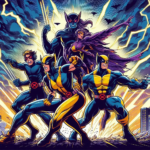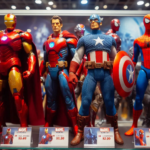Spawn stands apart in the superhero universe as an iconic figure created by Todd McFarlane in 1992. Unlike heroes tied to Marvel or DC, Spawn exists within Image Comics, an independent company co-founded by McFarlane and other creatives. This was a groundbreaking move for creators, allowing them to retain control over their characters rather than being bound by major publishers’ ownership. Spawn’s dark, supernatural themes quickly set him apart in the comic world, filling a unique niche that DC and Marvel hadn’t fully explored.

So, why the ongoing debate about where Spawn “belongs”? Fans note similarities between Spawn and figures from Marvel and DC: like Ghost Rider and Daredevil, Spawn has a dark, vengeance-driven story, while his conflicted morality sometimes recalls Batman or Wolverine. The character of Al Simmons, the man behind Spawn, finds himself resurrected as a Hellspawn, a dark anti-hero fighting against demons, corrupt institutions, and even Heaven’s agents. His complexity, blending human vulnerability with hellish powers, makes him a character who transcends standard hero-villain dichotomies typical in Marvel or DC.

Image Comics gave McFarlane freedom to delve into mature themes, resulting in a character who explores issues of guilt, redemption, and vengeance with a depth not often possible in more mainstream universes. This independence allowed Spawn to cross paths with various characters, like Batman, through limited crossovers, but he remains ultimately separate.

Spawn’s uniqueness stems from his creator-owned roots and his alignment with Image’s approach, which celebrates creative freedom and diversity of storytelling. Despite some crossover connections, Spawn’s story continues to unfold under Image Comics, defining him as a symbol of independent creative power, standing strong beyond the constraints of Marvel and DC.






